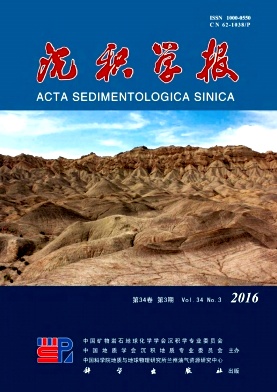Diagenetic Evolution and Facies of Shanxi Formation in LX Area of Ordos Basin
doi: 10.14027/j.cnki.cjxb.2016.03.017
- Received Date: 2016-03-06
- Rev Recd Date: 2016-04-18
- Publish Date: 2016-06-10
-
Key words:
- LX area /
- Shanxi Formation /
- diagenetic evolution /
- diagenetic facies
Abstract: Analyzed on casting thin sections, SEM, cathode luminescence, geochemical data, etc and combined with the method of statistics and calculation, we studied the petrologic feature, diagenetic types, sequence, and quantitative evolution of Shanxi Formation in LX area. Based on these researches, we established the types and classification standard of diagenetic facies, and determined the diagenetic facies' distribution of Shanxi Formation in the studied area. The following conclusions were obtained. The compaction and cementation were the main reasons for the densification of Shanxi formation in the studied area. The diagenetic stage was B of middle diagenesis phase. And the diagenetic evolution as follows: Stage A of early diagenesis phase went through the compaction and little carbonate cementation, and stage B was compaction, little cementation and dissolution. Stage A of middle diagenesis phase was mainly experiencing the dissolution and cementation, and stage B was carbonate cementation. The main types of diagenetic facies were moderate compaction, weak cementation, dissolution facies, moderate compaction, moderate cementation, dissolution facies, moderate compaction, strong cementation facies, and strong compaction, matrix strong filling facies. The favorable diagenetic facies was widely distributed in the studied area, which showed that the study area had a good exploration potential. Especially, the moderate compaction, weak cementation, dissolution facies was key area in the next exploration and development of Shanxi Formation in the studied area.
| Citation: | WANG CunWu, MA DongXu, TIAN Bing, LIANG JianShe, WANG Qi, LIU TieShu. Diagenetic Evolution and Facies of Shanxi Formation in LX Area of Ordos Basin[J]. Acta Sedimentologica Sinica, 2016, 34(3): 594-605. doi: 10.14027/j.cnki.cjxb.2016.03.017 |






 DownLoad:
DownLoad: